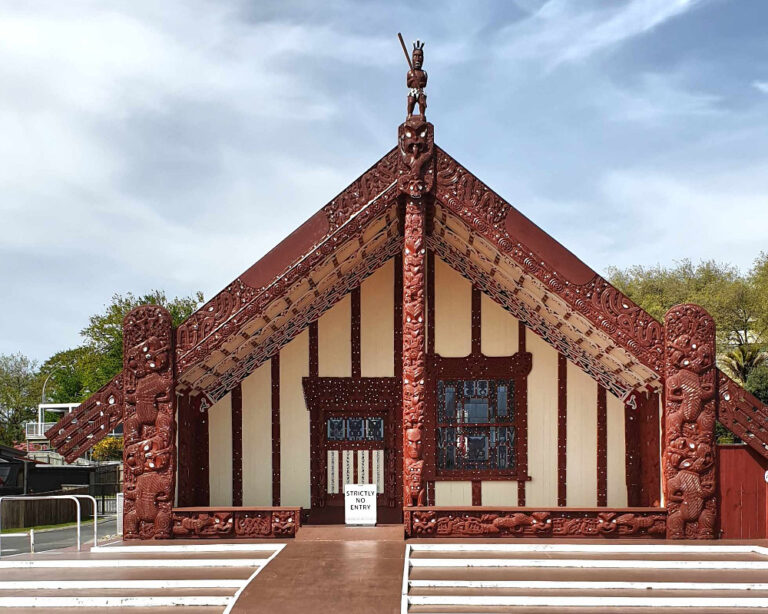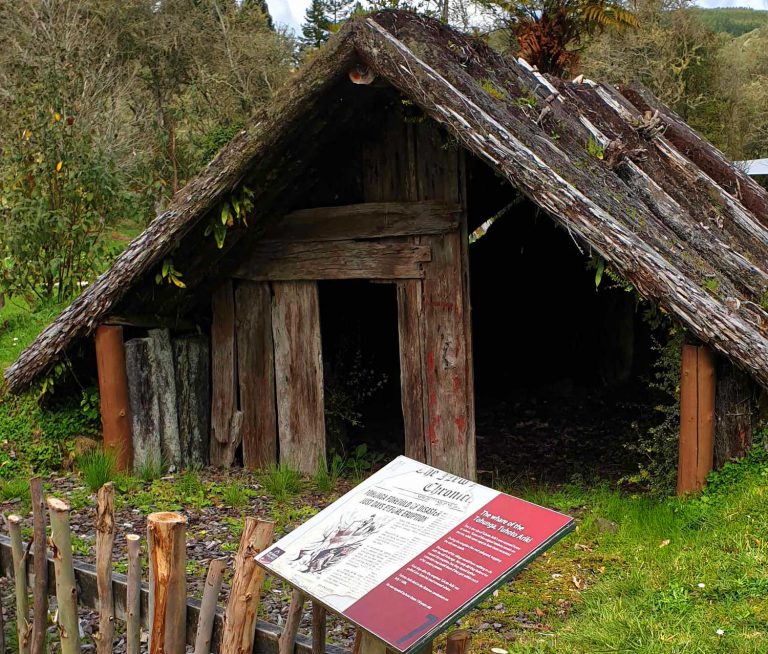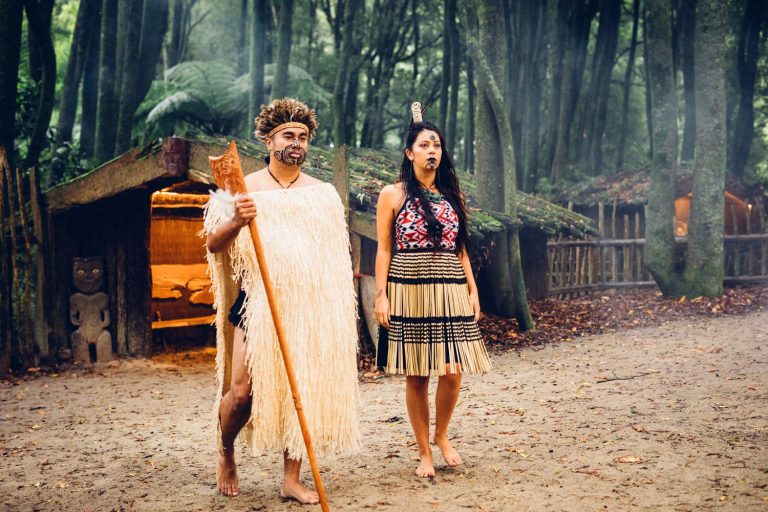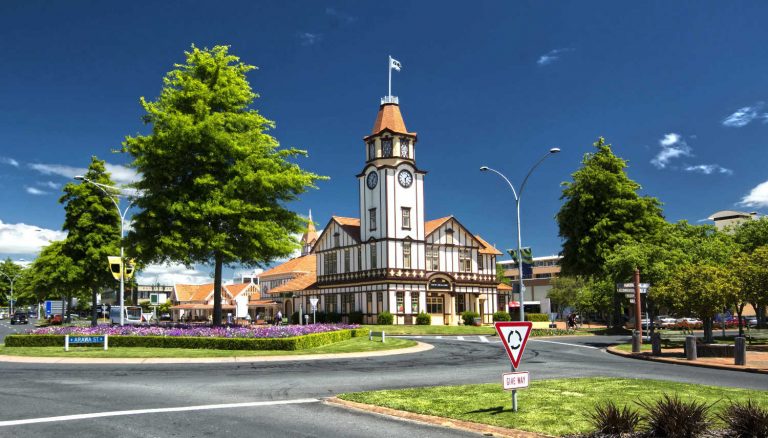Ohinemutu heritage village has been occupied for hundreds of years. The warm geothermal waters provided steam to cook, bath and heat houses. The village is a living community and a short flat 10 minute walk from downtown Rotorua. You are very much aware you are walking through a community who has called this place home for hundreds of years. The village centre is bordered by two striking buildings. Two beautiful structures face each other, the Tamatekapua meeting house or Tunohopu Marae and St Faiths church and its graveyard.

ST FAITHS CHURCH
A modest timber church’s interior is a glorious homage to Maori carvings, panel work and visuals of Christ wrapped in a Maori robes. The fusion of Maori cultural values and Christianity encourages thought about cultural values. The Service of Holy Communion is held there every Sunday at 9am in a mix of both Māori and English, visitors are welcome to attend the regular Sunday service. Don’t worry if your Te Reo is non-existent simply listen and absorb the Sunday energy around you. At the front of the church is the grave of Gilbert Mair, the sole Pakeha (European) to be buried in the vicinity. Gilbert was honoured due to his support for the Te Arawa tribe.
There is a urupa (cemetery) behind the church dedicated as the final resting place of soldiers of the 28th Maori battalion. The graves are raised due to the instability of the site due to geothermal water pressure. To the side is Te Ao Marama, the church hall. As you walk through the village with your personal guide you will be directed to view geothermal water to cook meals, family baths for a natural spa treatment and cracks and crevices where steam and hot water gush and hiss at regular intervals.
For detailed information about the carver and the symbolism of panel weaving consult the St Faiths Church guidebook supplied by your guide.
 St Faith’s church, Christ’s Maori persona
St Faith’s church, Christ’s Maori persona
 St Faith’s church Victorian triangle lead windows with Maori motifs
St Faith’s church Victorian triangle lead windows with Maori motifs
TAMATEKAPUA MEETING HOUSE
It is the home marae of the Ngāti Whakaue subtribes Ngāti Tae-o-Tū and Ngāti Tūnohopū.
The marae’s carved wharenui (meeting house), Tamatekapua, is named after Tama-te-kapua, the chief or captain of the Te Arawa canoe, which came to New Zealand from Polynesia in about 1350. Te Papaiouru Marae Wikipedia.
If you are a guest and enter the Marae you will view the historic figure of Tama-te-kapua on stilts depicting the story that started him on his sea voyage of exploration and the discovery of Aotearoa NZ. The meeting house is a stunning example of Maori building style. The building is a well known New Zealand tourism icon and an attraction in its own right. The carvings elaborate the stories and heritage of the Te Arawa people. Behind the marae is the Ohinemutu Māori Handcrafts where master carvers are at work. It is a special place to visit.


Discuss with your guide before visiting that you wish to observe the workshop.

RINGATU MARAE
There is a quiet corner where the Ringatu religion built a Marae, in Ohinemutu Village for Te Kooti to narrate however he never made it to this specific location. Te Kooti discouraged the building of separate Ringatū churches, as he believed Māori meeting houses were the heart and body of their communities and marae’s are where services should be held.
Ringatu is an indigenous interpretation of Christianity whereby the traditional oral recitation is part of core practice. Currently the Ringatu faith has 14,000 adherents.
MONUMENTS
An interesting monument is Queen Victoria’s memorial. The memorial is a testament to concepts of kūpapa, monarchy, and empire. Take a closer look at Queen Victoria and you will see parts of her arm are missing. The carving is part of the aesthetic vicissitudes that follow statutes. Queen Victoria has been removed, discarded by activists, placed in storage and dusted off when Prince Harry and his family came to visit. The continuing debate about the memorial reflects the hybrid nature of subject people and the aesthetic of Maori carvings framing a colonial monarch.
ENTRY INTO PRIVATE HOMES
You are welcome to walk on the public roads however self-guided visitors are not permitted to enter private property. Ohinemutu Village is someone’s home and respects the right to privacy. If you wish to observe hangi preparation and steam food cooking, discuss with your guide beforehand.
Rotorua’s Buried Village would have had elements of Ohinemutu before it was devastated in the volcanic eruption. Consider visiting both sites to gain an understanding of the importance of family and community life for Maori culture.

TRAVEL PACK INFORMATION
- It is recommended you visit Ohinemutu Village under the auspices of a guided tour who is authorised to talk about Te Arawa heritage and the significance of the various sights and sounds of the village. Contact Epic Maori for details.
- Self-guided visitors, St Faiths Church is usually locked to protect the interior from unwanted damage. It is open for Sunday service at 9.00am.
Read more about places to visit in Rotorua in our Rotorua travel guide.
BEST BITS TRAVEL GUIDE









